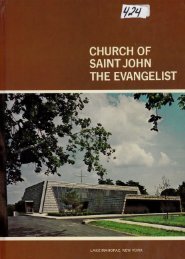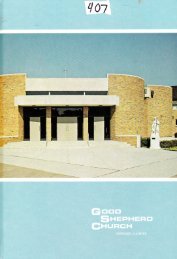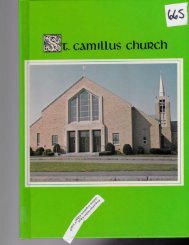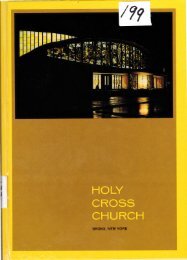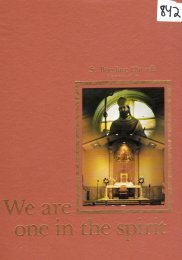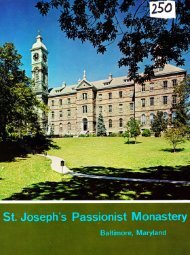Untitled - Digitizing America
Untitled - Digitizing America
Untitled - Digitizing America
Create successful ePaper yourself
Turn your PDF publications into a flip-book with our unique Google optimized e-Paper software.
year, these Nativists equalled, and in some areas<br />
topped, their previous victories.<br />
ln western regions, where populations were more<br />
scattered and the people were mostly hardworking<br />
farmers, they had become accustomed to<br />
the few "foreigners" in their midst and had no fears<br />
of a "papal invasion." But there were many<br />
reasons for the success of the <strong>America</strong>n party in<br />
the more densely populated and immigrantchoked<br />
East.<br />
The many years' long exodus from faminestricken<br />
and politically pressured lreland to the<br />
"welcoming" shores of <strong>America</strong> had caused a proliferation<br />
of "shantytowns" in and around our<br />
coastal cities. Most of the lrish chose to remain<br />
where they landed, in the commuter communities<br />
rather than again risk the terrible disasters inflicted<br />
on them by the farmlands of their mother country.<br />
While on one hand they were filling the<br />
almshouses and costing the taxpayers money,<br />
those employed were willing to take less for their<br />
labors than the natives and so posed threats to<br />
their livelihoods.<br />
By 1850, Roman Catholic-to date a maligned<br />
minority-had increased mainly through immigration<br />
to numbers exceeding that of any other<br />
denomination-1.75 million. Then, in the ensuing<br />
decade, that figure doubled. "Armies of the<br />
Vatican!"<br />
22<br />
Add to this Pope Pius lX's unfortunate timing in a<br />
move to quell trusteeism, an internal problem that<br />
the Know-Nothings also tried to turn to their advantage.<br />
Monsignor Gaetano Bedini was sent from<br />
Rome in 1853 as a papal representative to tour the<br />
country and help restore peace to troubled<br />
parishes. Everywhere he went, this symbol of<br />
"foreign intervention" sparked controversy and<br />
riots, actually contributing to the Nativists' cause.<br />
The Know-Nothings felt confident of a presidential<br />
victory in '1856 and seemed to be imbued with<br />
political insanity as the hot and heavy campaigns<br />
built to a crescendo. On Election Day, 1855, in<br />
Louisville, Kentucky, they attacked and set ablaze<br />
Catholic residences. As families fled from their<br />
burning homes, they were shot. Various newspaper<br />
estimates counted twenty-five to one<br />
hundred dead.<br />
The presidential contest evoked other fistfights<br />
and shootings, but the newly organized Republican<br />
party and the growing concerns of a new<br />
threat-the slavery issue-helped to divide and<br />
weaken the Nativists. The election of James Buchanan<br />
did not quellthe struggle, but it soon would<br />
be eclipsed bythe rumblings of secession threats.<br />
Happily, these historical facts reflectthe headlines<br />
of their day. Though the occurrences were typical<br />
of similar ones in other locations, they did not<br />
seriously impede the progress of Mother Church in<br />
the New World, and there were still communities<br />
where Protestants and Catholics lived in harmony.




